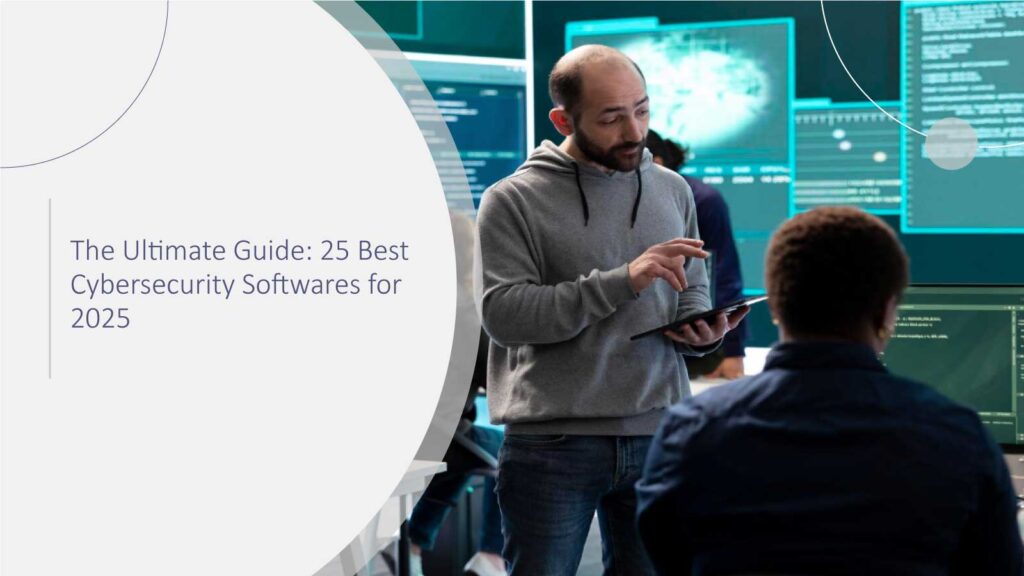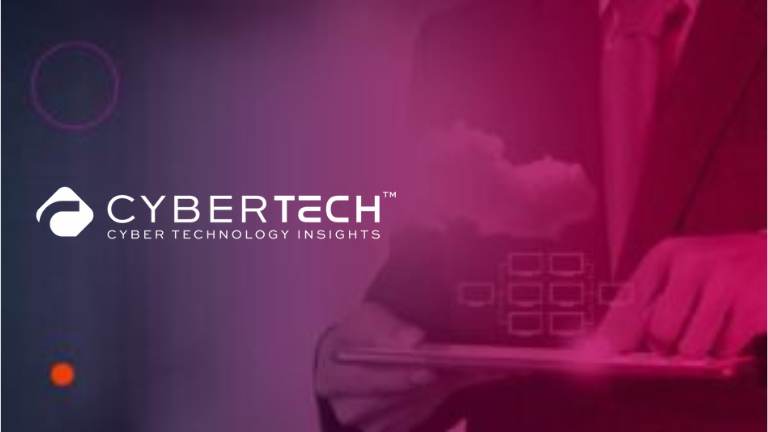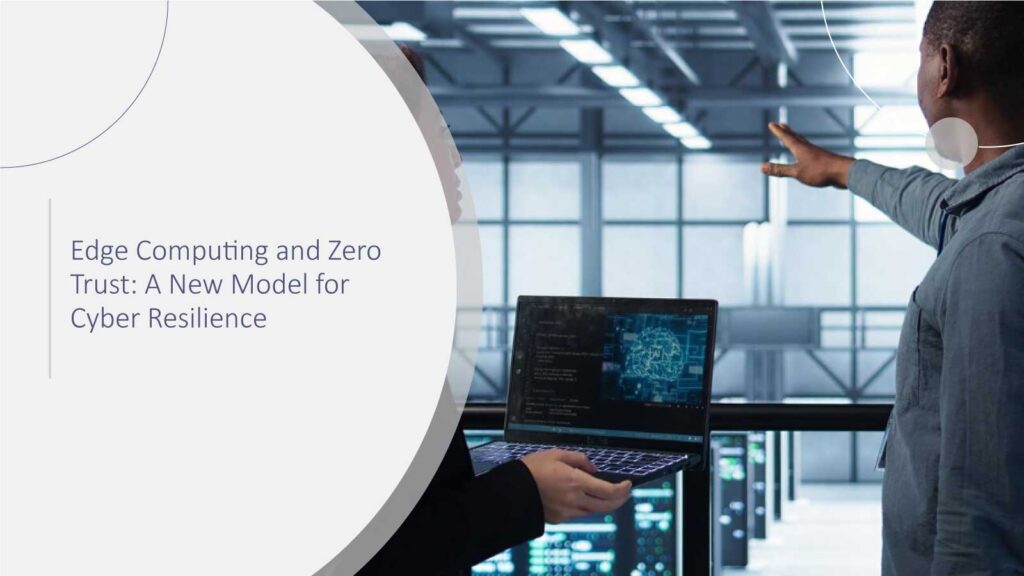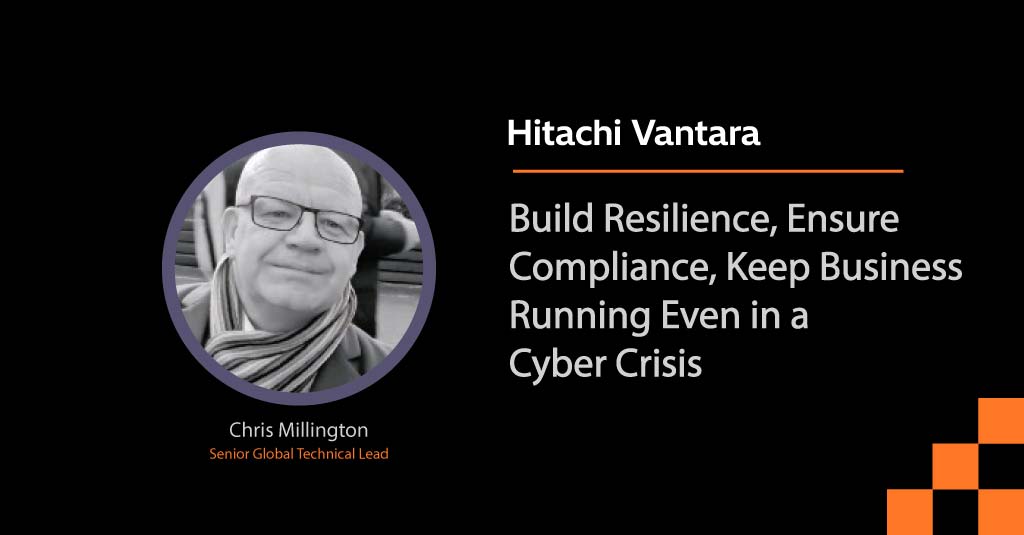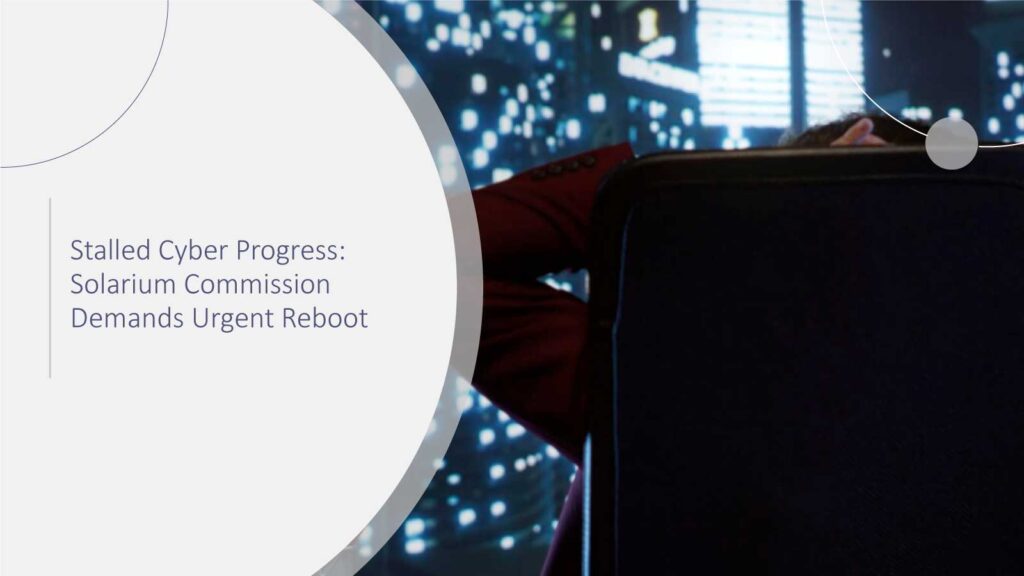In today’s digital world, cybersecurity is no longer just the concern of the IT department; it has also become a critical business strategy. Every day, organizations, government agencies, and professionals encounter a situation in which threats mutate more quickly than any firewall can deal with. According to Gartner’s 2025 Security & Risk Management Forecast, 72% of global enterprises report facing at least one severe cyber incident every month, up from 55% in 2023.
If you have ever questioned whether your company is really safe or how to remain the leader of the pack, this manual is made for you. Along with that, we shall discuss the 25 top cybersecurity software in 2023, highlighting their individual features, application instances, and the reasons why these platforms receive the trust of leading global organizations.
This guide will also be helpful for a CISO in search of an enterprise-level solution, an IT enthusiast who wants to keep track of innovation, or a busy professional who is looking for reliable software. They will get from it not only a clear but also an actionable overview to be able to make educated choices.
Why Cybersecurity Software Matters in 2025
Cybersecurity is not a choice anymore. As cloud adoption, remote working, and the nature of cyber-attacks have become increasingly complicated, organizations are bound to pay for complete security frameworks. McKinsey estimates that cybercrime could cost businesses globally $10.5 trillion annually by 2025, a 300% jump since 2015, making cybersecurity one of the top three boardroom priorities.
However, as there are hundreds of solutions in the market, the challenge is like finding the one-out-of-the-way tool.
Think it over: your company decides to migrate to a new cloud platform, and within less than a month, a poorly configured API has given a bridge to hackers. Or maybe employees who do this phishing email without even knowing it. The spam filters of the past have been eliminated by the e-mails that can go through them. These are not theoretical ones; they almost always occur. The correct cybersecurity software can mitigate these events while at the same time ensuring the company’s safety and security regulations and the maintenance of loyalty with customers.
Here is a rundown of the top present-day solutions that have a significant impact on the cybersecurity landscape. Official data for each platform is hyperlinked for your convenience.
1. Palo Alto Networks
Palo Alto Networks is a leader in the market, that is for sure, with its next-generation firewalls, basic and advanced endpoint protection, and AI-powered threat intelligence, etc. Through its Cortex platform, it achieves the integration of threat prevention, which makes it appropriate for organizations with complex IT frameworks. In addition to this, the platform also offers visibility into network traffic and user behavior on a real-time basis, thereby allowing security teams to solve the issue of vulnerabilities in a proactive way before they turn into a bigger problem. The easy and smooth integration with cloud environments and third-party tools is extending the protection to hybrid IT infrastructures, thereby making it a trusted choice for enterprises that are seeking both agility and strong cybersecurity governance.
2. Fortinet
By implementing Fortinet’s FortiGate and FortiAnalyzer, an organization sets up a system where the network is kept protected from the endpoints, threat policies are actively prevented from being breached, and the secure SD-WAN is easily integrated with the current architecture. It is built with a flexible architecture that can be simply adopted for a service provider or a business network. Furthermore, Fortinet’s Security Fabric allows for the management of the whole network from one point, as well as the automated response to almost all threats, which in turn greatly lowers the workload of the IT staff. Their AI-powered analytics find and alert on any unexpected performance instantly, resulting in a much quicker incident reaction time. With all the cloud, on-premises, and hybrid environment supports, Fortinet provides a unified security framework that not only streamlines the business operations but also enables the enterprise to be in full compliance with the industry standards and regulatory requirements.
3. Bitdefender
When the topic is endpoint security, Bitdefender is a pretty decent option. The anti-malware and AI-based threat identification that the company uses are extremely efficient. Their preventative approach leads to the discovery of malware, ransomware, and zero-day exploits at the earliest stages of their development; thus, they reduce the potential risk for the whole organization to a great extent. Moreover, Bitdefender applies behavioral analytics and machine learning to always be a step ahead of hackers’ new tactics, thus giving up-to-date threat intelligence. The centralized management console facilitates administration over different endpoints, thus being quite suitable for any size of organization. By integrating automated detection, quick remediation, and minimal system impact, Bitdefender can provide a high level of cybersecurity that does not hinder the performance or the productivity of the users.
4. Cisco Systems
Cisco Security is the provider of various selections within the network security ecosystem, which includes secure access, firewalls, as well as cloud security. The idea of its solutions is strongly tied to being observable, having on-demand analytics, as well as being able to quickly neutralize the threat. Also, the Cisco solutions are tremendously compatible with the DevOps and cloud-native workflows, allowing the same security across the hybrid IT landscapes.
Moreover, the threat intelligence feeds and the advanced malware protection from Cisco keep enterprises aware of the new threats. By combining automation, real-time monitoring, and policy-driven enforcement, Cisco empowers organizations to lower their operational risk, maintain compliance, and guarantee the continuity of critical business operations that even in the case of the occurrence of highly dynamic digital environments, they can function normally without any interruption.
5. CrowdStrike
CrowdStrike Falcon is a platform that is built in the cloud and combines endpoint security, threat intelligence, and AI-enabled response. Its immediate threat assessment allows affected organizations to step in before the havoc spreads. Besides this, Falcon uses behavior analysis to detect anomalous activities over the entire network of devices instantly, thus giving a prompt removal of the threat and a continuous check-up. Moreover, its minimalistic agent and cloud-first design enable a quick installation without interrupting the normal flow of work. Through the amalgamation of threat intelligence feeds with the provision of actionable insights, CrowdStrike equips organizations to foresee vulnerabilities that can lead to cyber-attacks, thereby lessening the exposure time and enhancing the overall security resilience while also fighting the cybersecurity battle.
6. IBM Security
IBM Security Family is the set of Security Information and Event Management (SIEM), identity and access management, and endpoint security products. Besides allowing the forecasting of anomalies by sophisticated algorithms, QRadar also makes the detection of false alarms easier by assigning them a processing priority. Additionally, IT departments employing IBM Security solutions obtain the possibility of applying the advanced analytics and automation tools that prepare them to focus on the critical threats instead of the numerous routine alerts. Such integration, which extends from the cloud to on-premises and hybrid environments, definitely reassures the same security policies. By combining real-time visibility, anomaly detection, and smart workflow orchestration, IBM Security is providing the instruments to organizations for compliance achievement and continuous cyber defense, whether the threats are known or new.
7. Trend Micro
Trend Micro is one very powerful single package that covers not only endpoint protection but also network security and cloud defense. Through the use of machine learning, the detection of malicious activities can be done very easily and accurately. Moreover, Trend Micro offers threat intelligence in real time, automated remediation, and central management across different environments. Its support of the hybrid cloud ensures that the same security level is maintained from the data center to the public cloud. Companies that have installed Trend Micro are in a position to prevent intrusions, lower risks, and increase efficiency by combining the use of user behavior analytics, threat hunting, and automated policy enforcement, all while security is not being sacrificed.
8. Tenable (Nessus)
Nessus is a platform that Tenable provides and is famous for scanning vulnerabilities and assessing the risk, thereby giving a lead to the organizations to identify weaknesses before hackers utilize them. Besides, Nessus delivers in-depth reports along with the dashboard, which give a complete picture of the remediation work by listing the risks that need to be fixed first, along with the degree of the asset.
Tenable achieves the total coverage of the security landscape by allowing seamless integration with other IT and security systems. Their continuous monitoring tool provides for a CAPTCHA problem if there are present misconfigurations, old software, or unpatched vulnerabilities, etc.
For risk managers who are willing to take the initiative, Tenable provides both the latter and the former, thus allowing the IT team to make not only the right but also the timely decisions and keep a good security status throughout the company.
9. KnowBe4
KnowBe4 is focusing most of its energy on user training and phishing simulations, as these two activities lead to the strengthening of the human firewall. Training employees to spot and report threats leads to fewer social-engineering attack vectors for the enemies of the company. Moreover, KnowBe4 also provides a plethora of interactive modules, simulated phishing campaigns, and reporting dashboards. Through the promotion of a security-aware culture, it changes the employees from being the weakest links into the strongest parts of the defense system. Organizations get the following benefits: they can measure successful phishing attempts to be reduced, they can improve compliance with regulations, and they can have an empowered workforce that can easily identify and respond to threats.
10. Darktrace
Darktrace is an AI and machine learning-based system that comprehends the network’s abnormal behavior. One of its features, the self-operating response, indicates that it can separate a threat situation without any intervention by a human operator. Apart from auto-response, Darktrace keeps on learning from the network’s habits, sniffing even the smallest departures from the norm that human analysts might fail to detect. Its Enterprise Immune System concept simulates the normal activity of network devices, users, and applications, thus giving the opportunity for a preemptive elimination of those threats that can be both known and unknown. Firms receive the assurance of a smooth continuation of operations while they deal with the attacks that occur; therefore, they can minimize the potential negative effect on the business to a minimum.
11. Check Point Software Technologies
Check Point provides security for the cloud, network, and devices. The company’s Infinity architecture merges several layers of security, which gives the possibility of preventing and managing threats in real time. The same platform also installs threat intelligence feeds and automated policy enforcement, thus keeping IT staff always one step ahead in dealing with incident response. Through its centralized management console, managing across different types of environments has become more efficient as the command line has been greatly simplified.
In addition to the fact that Check Point allows organizations to continuously be in line with various regulations by employing a security solution that travels with the user from the endpoint to the network and cloud, it also provides organizations with the possibility to lower the risk of exposure to highly advanced cyber threat carriers.
12. Sophos
Sophos is a company that provides connected endpoint security, managed threat response, and network security, which denotes it as a vendor of such services. The product line that the vendor delivers is largely based on usage through the product’s sophisticated algorithms, which in turn are the company’s unique selling points, alongside the fact that the security level is not compromised. Further, as a top security company, Sophos is engaged in applying state-of-the-art machine learning for virus detection and behavioral analytics for discovering the abnormal. The easy-to-use dashboard allows for complete integration, thus facilitating the automated reaction that removes the threat copy and saves time and effort. On assembling these features, customers of organizations who are balancing stable security, working capacity, and user productivity to minimal interruption find Sophos as the best choice.
13. Zscaler
Zscaler is one of the first companies to offer cloud services that are very safe and secure, and is now offering the SASE solution, which is not traditionally dependent on VPN but still keeps the access secure. Their product checks every packet of data, even if it is SSL-encrypted, to make it safe for the user who can be anywhere and use any device. With the implementation of the zero-trust model, Zscaler carries out the security measures right where the application is, thus no infected files can move horizontally inside a network. Any organization gets tremendous advantages like a) security that can scale up or down depending on the need without losing latency performance; b) cloud apps which are automatically protected against all sorts of attacks; and c) the remote users are given full freedom while security is still in place.
14. OneTrust
OneTrust is a comprehensive solution that automates privacy, security, and compliance tasks. Its seamless connected ecosystem spells out the organization’s adherence to a host of changing regulations while managing risk in a cost-effective manner. Moreover, the software offers metrics and visualizations that not only consolidate governance reporting but also evaluate third-party risk and track data management activities.
OneTrust keeps organizations at the forefront of the changing privacy landscape by ensuring the distribution of privacy policies across departments and locations that, in turn, help build customer loyalty and lessen the likelihood of fines by regulators.
15. Salt Security
API protection is the main target of Salt Security. Its technology, which is based in the cloud, detects weaknesses, finds abnormalities, and keeps API data safe for companies that shift to microservice structures. By thoroughly checking the API flow, Salt Security gives a warning in advance of the occurrence of possible exploits and unusual activities. Through its intelligence and analytics, the organization’s security team is enabled to take preventive measures ahead of time so that operations are not affected and safe integration with other cloud-native applications is guaranteed. To contemporary businesses, Salt Security presents a solution that is anticipatory, extendable, and flexible API protection.
16. Rapid7
Rapid7 Insight melds vulnerability management technology, SIEM, and endpoint detection to facilitate the realization of security goals. The tool utilises analytics and automation to make threat detection and response more efficient, allowing for real-time actionable insights to be delivered. Besides, the Rapid7 platform can even be connected to other IT infrastructures, thus making the flow of monitoring and risk assessment possible. Hence, organizations get better visibility, quicker incident management, and greater decision-making capability alongside a lower workload of security teams.
17. Proofpoint
Proofpoint concentrates on keeping email safe, gathering threat information, and offering solutions to be in compliance with the laws. The company makes products that help organizations to be safe from these security threats, namely: phishing, ransomware, and impersonation attacks. Moreover, Proofpoint’s sophisticated analytical tools can visualize the riskiest emails of an organization, whereas the instructional modules for users further contribute to the awareness of the employees. The cloud-based system of the company guarantees the feasibility of the organization and thus the capability of executing the system without losing the flow of the organization’s work or violating the compliance requirements.
Recommended: Top 50 Cybersecurity Executives of 2025 You Need to Know Right Now
18. Broadcom (Symantec / Norton)
Broadcom ties in Symantec enterprise security as well as Norton consumer protection. The company covers the whole spectrum of security, from endpoint security, threat intelligence to advanced malware detection. Through AI-based threat detection and unified management, Broadcom equips enterprises to find and eliminate threats swiftly. This system accommodates hybrid environments and delivers practical security measures that can be used to both fulfill regulatory policies and raise cyber-defense capabilities through enterprise networks.
19. Trellix
Extended detection and response (XDR) provided by Trellix combines various security layers to enable quicker threat identification and response. Through the integration of data from endpoints, networks, and cloud environments, Trellix affords one visibility and practical threat intelligence. The automation and orchestration functions facilitate incident response, thus lowering the time when malicious activities can dwell and the risks. Hence, this solution can be considered suitable for companies aiming at the integration of deep and wide security measures.
20. Barracuda Networks
Barracuda secures the management of emails, cloud applications, and web traffic, which increases the end-user trust and confidence. Easy deployment as well as scalability allow users to be protected from phishing, malware, and data breaches. Through automated monitoring, policy execution, and threat intelligence integration, organizations can always be on the front line to avert crises, which saves not only valuable data but also the users’ experience in difficult IT environments.
21. Okta
Okta is a company that is focused on managing identity and access, and provides SSO, MFA, and adaptive authentication for cloud as well as for on-premises systems. What their platform does is it cuts down on risk, and at the same time, it makes the user’s experience smoother by allowing only authorized users access to the critical resources. Okta’s control at the center and policy implementation aid with legal requirements as well as with the productive management of the team, which is spread out in different locations.
22. SentinelOne
SentinelOne’s AI-driven endpoint security system is designed to automate the identification, reaction, and solution processes. The Singularity platform integrates the threat intelligence gathered from endpoints, cloud, and IoT devices. Besides that, it offers the functionalities of self-reliant threat hunting and undoing actions, thus reducing downtime and facilitating business continuity. Companies are able to respond to threats quickly without the need for a lot of manual work, thereby increasing their cybersecurity resistance network.
23. CyberArk
CyberArk deals with the management of the most important access rights, keeping the passwords, secrets, and other sensitive data safe, regardless of the environment, whether it is on the cloud, on-premises, or in a virtual data center. The company’s solutions eliminate the chances for intrusions, implement the least-privilege policies, and track the activities of privileged users. Through the use of CyberArk, organizations are able to lower the risk, guarantee that they meet the compliance requirements, and remain reliable without causing downtime by simply integrating with their current infrastructure and software.
24. Cloudflare
Cloudflare provides DDoS protection, WAF, and secure content delivery that guarantees access with low latency from all over the world. Its worldwide network performs in-the-moment harmful traffic filtering, thus continuous protection and great performance are ensured. On top of that, the Cloudflare setup is compatible with additional security options such as automated bot management and SSL/TLS encryption, which makes it a trustworthy partner for businesses and IT services looking for the combination of pace and safety.
25. McAfee
McAfee is the provider of endpoint security, threat awareness, and cloud security for businesses and consumers. The company’s platform is made up of various components, including automated threat identification, complete antivirus protection, and centralized control, all of which ensure that security is maintained over the hardware and other environments. The flexible solution of McAfee allows organizations to achieve regulatory requirements, mitigate the possibility of losing operations, and protect highly confidential information while facilitating the smooth functioning of the hybrid IT ecosystem.
Fast-Growth Cybertech Companies You Should Watch in 2025
Of course, the pioneers are not the only stars on the cybersecurity market horizon. Besides the leaders, many fast-growth cybersecurity companies are also shaping the market that should be on everyone’s radar next year.
Alongside established leaders, several rapid-growth cybersecurity innovators impact the market, providing novel views and cutting-edge technology to address modern threats:
Netskope – Cloud security and SASE solutions that offer organizations the ability to secure cloud-native applications as well as to implement safe access policies that can be automated and are scalable, at any point in the network.
Huntress – This platform makes it possible for small and mid-sized organizations to have on-demand managed threat detection, incident response, and remediation that meet their specific needs. Her system offers continuous oversight, prompt threat isolation, and extensive exposure of evil, supported by a threat operations team that is human-led.
SentinelOne – Endpoint protection that is fully autonomous and powered by AI, automation, and real-time threat intelligence, hence the rapid detection and remediation is secured.
Abnormal Security – The AI-based email security architecture that completely stops phishing, which is the main source of business email compromise, and the most complex social engineering attacks.
Snyk – This is the security platform that is developer-first and made to find out and fix the security holes in the code, the open-source dependencies, and the containerized applications works in this way.
Tailscale – WireGuard is used to connect to the secure and scalable network, which is vastly more comfortable than the older private networks that work with teams connecting via distributed geographies.
Zluri – The SaaS platform for software management and security, which provides access, governance, and protection for applications that can be of different kinds with no boundaries of any vendor.
Axonius – A Cyber asset management solution that allows for visibility into the inventory of devices, users, and cloud assets and specifically over the environment where hardware interacts with cloud services.
Stytch – The passwordless authentication system that improves user engagement while promoting security for applications of the new generation.
Cynomi – Provides virtual Chief Information Security Officer (vCISO) services that ensure organizations get the required governance, risk, and compliance advice regardless of their size or location.
In their usage of AI, automation, and cloud-first designs, these innovators resemble, to perfection, the values of speed, agility, and avant-garde thinking, and at the same time operate in harmony with traditional cybersecurity solutions. By doing this, they become able to neutralize the emerging threats with the rapidity rarely seen before. Organizations that choose to combine technology from these high-tech companies can reach a security system that is multi-layered, adaptive, and resilient, thus being able to secure their data, users, and digital assets, even when the threat landscape has become complicated and continues increasing.
The emergence of these players that grow rapidly is just another confirmation that cybersecurity is never a dead end – it follows the footsteps of technology, adjusts to new business needs, and accepts the changing nature of threat landscapes. Thus, the security issues put in front of industry professionals and business enterprises alike can be easily solved by relying on a set of solutions that comprises not only the oldest but also the latest and most innovative ones, this being the only way to guarantee a thorough defense that is also flexible and scalable for the future.
Key Takeaways
2025 is a must that has to be a part of the company’s strategy, not only an IT department’s job.
- The most sophisticated cybersecurity software continually secures endpoints, networks, cloud platforms, APIs, and identities.
- One can become more protected and secure having addressing the gap between the old and new platforms that are growing rapidly.
- Automation, AI, and machine learning complement each other to go a long way in threat prevention.
- The employee awareness factor is still a major one; behavior and training that are human in nature, but received from technology form a total that complements cybersecurity.
Conclusion
In 2025, effective cybersecurity will still be a challenge that requires the implementation of a strategic, multi-layered approach. The Top 25 cybersecurity software solutions, including those from Palo Alto Networks, Fortinet, Salt Security, and OneTrust, not only secure endpoints, networks, clouds, and identity systems but also cover a wide range of protection. In addition to these are the rapid-growth mavericks like Netskope, SentinelOne, Abnormal Security, and Snyk that provide adaptable, AI-driven defenses against the new threats. The integration of the current leaders with the future-oriented platforms guarantees the security systems that are resilient, scalable, and intelligent. For both organizations and professionals, it is advantageous to use this mixed balanced strategy that allows them to be proactive in threat management, protect their most valuable resources, and gain the trust that is so important in the constantly changing digital landscape.
FAQs
1. What is the best cybersecurity software for enterprises in 2025?
The likes of Palo Alto Networks, Fortinet, and CrowdStrike, being platform products that are especially designed for enterprise-grade clients, can offer comprehensive protection to networks, endpoints, and cloud systems.
2. Are cloud-native security solutions effective?
Absolutely. Netskope, Zscaler, and Salt Security are a few of the solutions that not only easily secure the cloud in a very scalable way but also enable remote or hybrid work arrangements.
3. How important is endpoint security?
Very. The devices on the endpoints are still the primary targets of the attackers. Platforms such as SentinelOne, CrowdStrike, and Bitdefender are those that can perform threat detection and response activities in real-time.
4. Which cybersecurity software helps with compliance and privacy?
OneTrust makes it easy for organizations to simplify compliance and privacy management, as well as sustain compliance with the frequently changing regulations. Besides that, IBM Security and Rapid7 are two providers of compliance-focused tools, respectively.
5. Should organizations invest in fast-growth cybersecurity companies?
Definitely. The likes of Abnormal Security, Snyk, and Zluri are among the suppliers of revolutionary solutions that not only support the traditional cybersecurity stack but also that of cloud and API security.
For deeper insights on agentic AI governance, identity controls, and real‑world breach data, visit Cyber Tech Insights.
To participate in upcoming interviews, please reach out to our CyberTech Media Room at sudipto@intentamplify.com.

